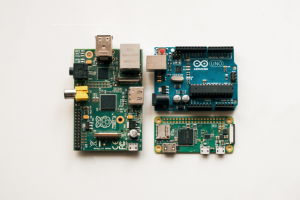Recycled Computer Equipment – What Types of Computer Equipment Can Be Recycled?
Recycled Computer Equipment
Technological advancements have pushed computers and other electronic equipment to be replaced at a rapid rate, leaving obsolete or broken equipment as e-waste. In recent years, governments and private companies have instituted stricter rules regarding e-waste disposal. For instance, most local garbage collection services no longer accept new or old electronics as regular trash. Those who wish to recycle computer parts or other e-waste can take advantage of special recycling centers that specialize in repurposing discarded hardware. These facilities help to reduce landfill buildup of toxic pollutants by converting e-waste into useful products and components.
A few key pieces of recycle computer equipment can be recycled as a whole or broken down into separate parts for further use. These components include hard disk drives, which store data and files for the computer; printers, scanners and copiers that allow businesses to manage their paperwork without outsourcing these tasks; and mobile devices such as laptops or tablets that allow employees to stay productive on-the-go. In addition to promoting sustainability, the recycling of these pieces of computer equipment lessens the need for mined raw materials and reduces environmental pollution caused by mining operations that emit harmful greenhouse gases.
The first step in recycling computer parts or other e-waste is to remove and separate any hazardous materials. This manual process includes removing and disposing of batteries, ink or toner, cathode ray tubes from monitors (which contain lead) and mercury bulbs used in some printers or scanners. Afterwards, the e-waste is fed into a large industrial shredder that breaks down larger parts and prepares it for further processing.

Recycled Computer Equipment – What Types of Computer Equipment Can Be Recycled?
Once the e-waste is processed, ferrous and non-ferrous metals are separated out for further processing into new products. Copper, nickel and palladium are some of the most valuable elements found in computers and other electronic equipment. These metals are used in a variety of different industries and manufacturing processes, so it is important to recycle them.
In addition to metals, other recyclable computer parts include plastic casings, switches and connectors. Most of these parts are repurposed for other uses or melted down and sold to manufacturers for use in their products. Plastic casings can be turned into new plastic products and connectors can be made into new electrical circuit boards.
The main advantages of using computer equipment in a business are the time savings and increased productivity. For example, a desktop computer can complete tasks that would take hours in the same amount of time as a pen and paper. In addition, computer software programs help to simplify tasks and increase accuracy.
Computers and other electronic equipment use a lot of energy to operate, especially when they are in standby mode. This translates into a lot of emissions and waste. By recycling computer equipment, the energy used to power these devices can be conserved and redirected into other uses. In addition, repurposing computer parts instead of discarding them completely reduces the amount of waste a company produces.

